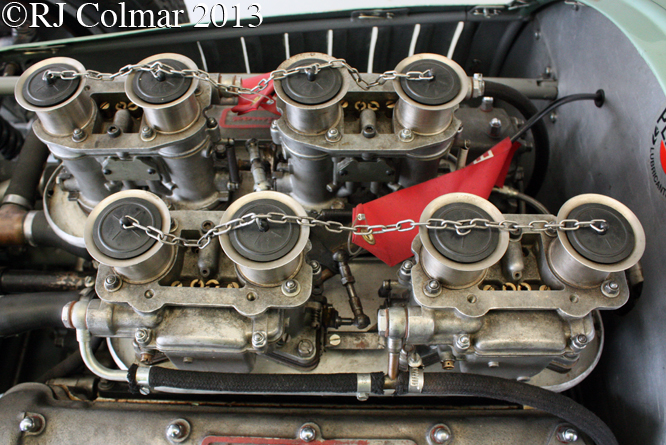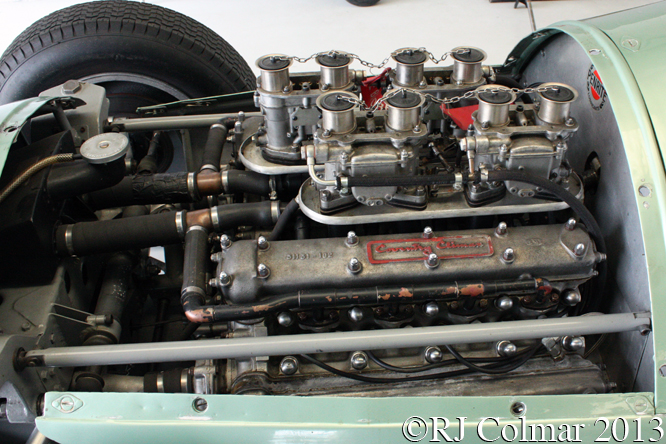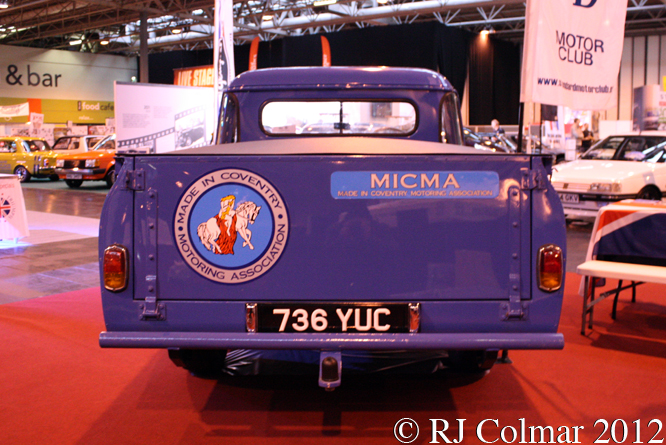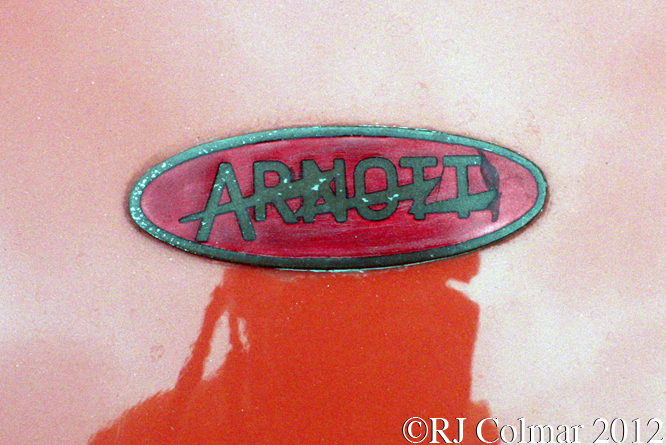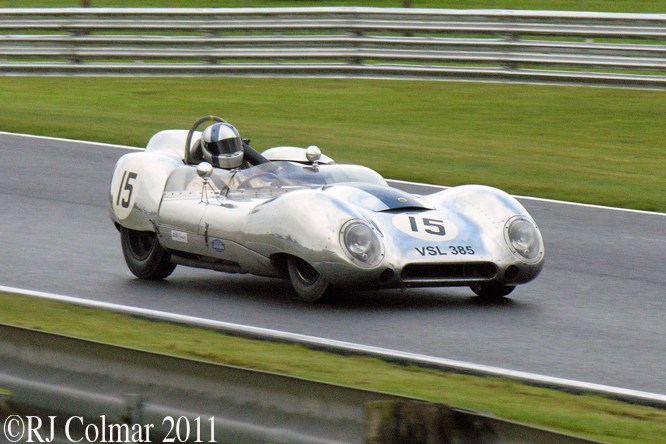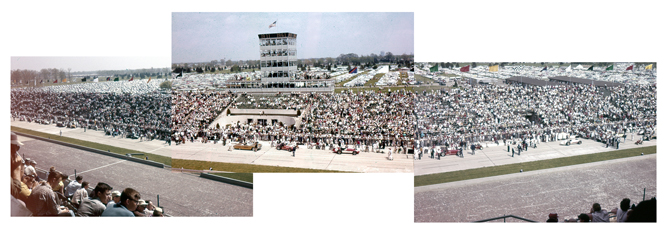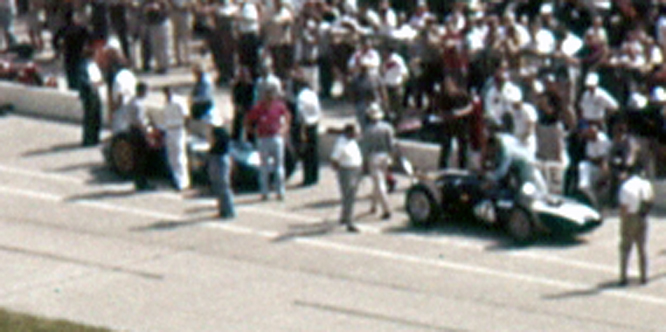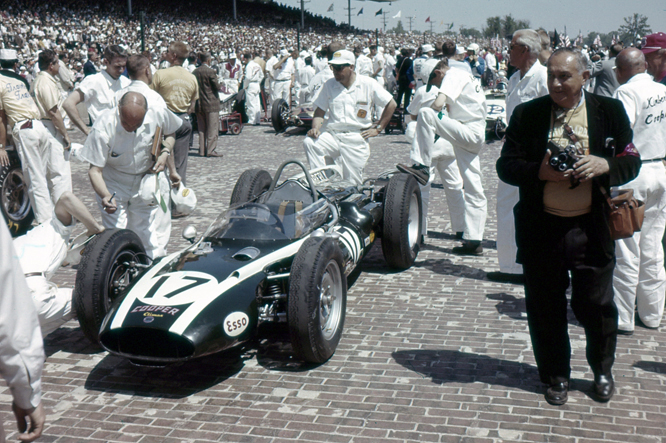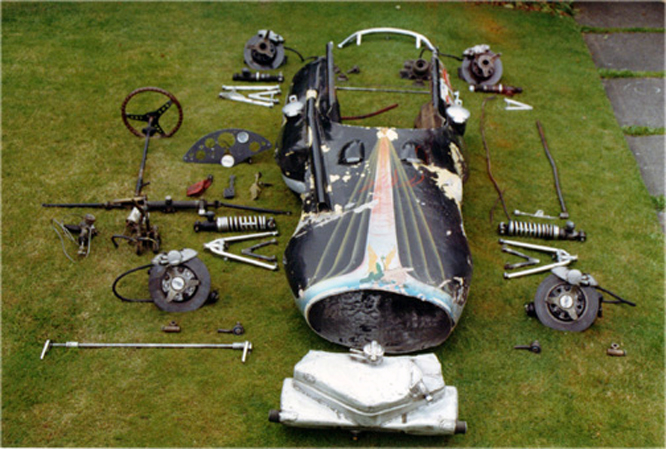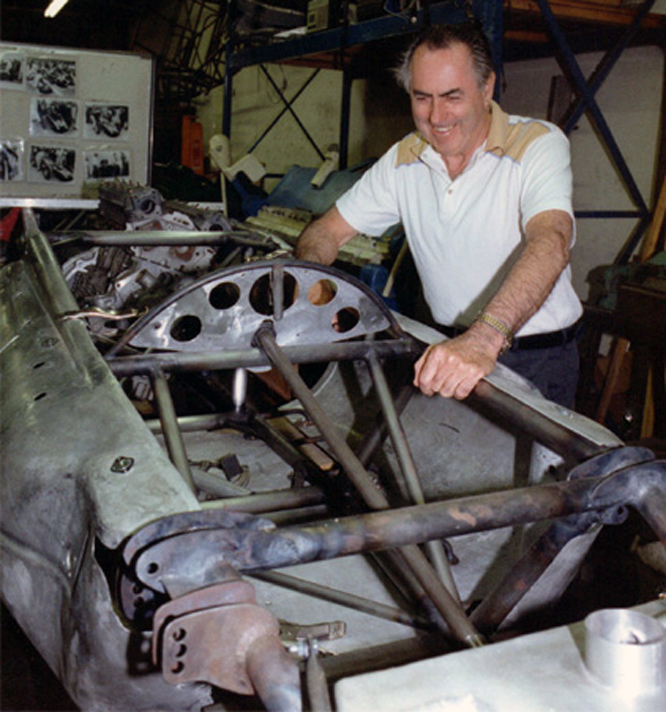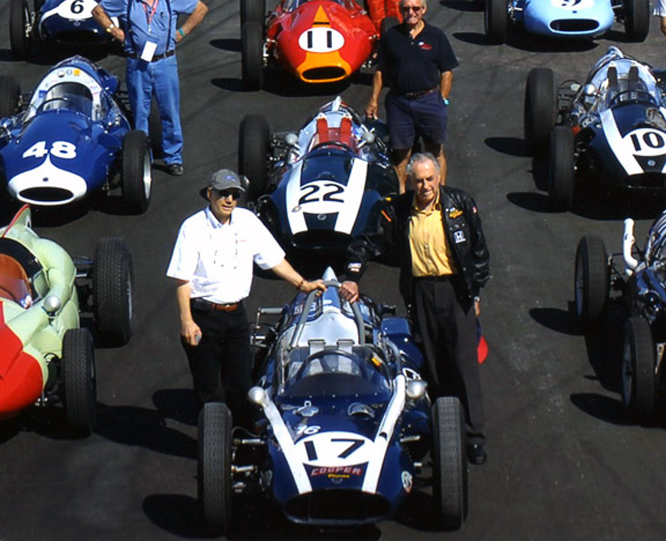There are some ideas that have to wait until just the right time in order to have an impact, one such case in point is the idea of using a monocoque shell to build a racing car chassis / body rather than the oft used couple of helfty rails or beams welded together or a more intricate space frame built up of small tubes welded together with a body thrown over the top.
The idea of using a monocoque shell made of fabricated sheets of metal to build a racing car can be traced back to 1912 when Howard Blood built a prototype cyclecar called a Cornelian which in 1915 was prepared by the Chevrolet brothers Louis and Albert for an attempt at the Indy 500. The Cornelian reached 12th place before it’s 33hp Sterling motor dropped a valve causing retirement. Around 100 monocoque chassis Cornelian cyclecars are thought to have been built before production came to a halt.
In 1923 aviation pioneer Gabriel Voisin built a team of four extraordinarily underpowered monocoque racing cars to take part in the French Grand Prix at Tours, giving away over 15 mph in top speed just one car survived to finish fifth and last over 1 and a quarter hours behind the winner over the 496 mile race distance.

Despite the success of the D-Type Jaguars at Le Mans in the mid 1950’s which featured a half monocoque design with the engine mounted on a sub frame it was not until 1962 that Colin Chapman revisited the monocoque idea for use in a Grand Prix Car and started to make the advantages of structural rigidity, thanks to the use of innovative steel bulkheads, weight saving and reduced frontal area work in the Lotus 25 design which shares identical suspension and running gear with the 1962 space frame Lotus 24.
The Lotus 25 chassis #R5 was one of seven such vehicles used for Grand Prix Racing from 1962 until models eventual swansong in 1967. The #R5 chassis was completed late in 1962 just in time for Jim Clark to attempt to clinch his first World Drivers title at the South African Grand Prix, unfortunately after starting from pole a tuppenny oil plug came lose and ended Jim’s race twenty laps early allowing Graham Hill to win both the race and the World Championship.
Jim used the car again in 1963 but Trevor Taylor was given #R5 to race at the second event of the season Belgian Grand Prix at Spa Francochamps. During practice for this event #R5’s suspension collapsed and the subsequent damage meant Trevor continued participating in the spare car #R3. Thanks to Roger, Rob of The Nostalgia Forum it has emerged that Trevor retired from the 1963 Belgian GP after 5 laps as the result of a severed thigh muscle.

Chassis #R5 was taken back to the Team Lotus Factory and stripped down to the bear monocoque which was put aside awaiting recycling when Lotus mechanic Cedric Selzer was given permission to take the wrecked monocoque, along with some redundant parts, home.
Over the next twenty years Cedric collected enough parts including a correct Coventry Climax V8 engine to ‘recreate’ the written off #R5 in 1984.
With the full knowledge of the story of #R5 being in the public domain this rare vehicle sold for just short of a million US$ at auction in 2007.

This second Lotus 25, chassis #R4 seen above with Andy Middlehurst at the wheel during the Goodwood Revival meeting has an even more amazing tail to tell, it is the remains of the very car which Jim Clark drove to a, for the period, record setting seven Grand Prix victories on his way to securing the 1963 World Drivers Championship and the World Manufacturers Championship for Lotus.
In 1964 #R4 was driven by Formula Junior sensation Peter Arundell who started his first full season in Grand Prix racing with two third place finishes in the opening two races at Monaco and Zandvoort (Holland) and came home 4th in the French Grand Prix which proved to be his last of the 1964 season thanks to an accident in an open wheel Formula 2 race which effectively ended Peter’s career although he did unsuccessfully return to the wheel in 1965.
#R4 was then sold to Reg Parnell who replaced the Coventry Climax V8 with a BRM V8 and then given first to South African Tony Maggs and then Richard Atwood to drive. Richard crashed the car in the Belgian Grand Prix after which the repaired chassis was given the #R13 chassis number by the Parnnel Team in what might be considered a slight of hand to make the car look like it had a later Lotus 33 type chassis number, the #R13 chasssis number having been passed over by Team Lotus. #R13 also acquired the nickname Percy at this time.
Innes Ireland and Bob Bondurant competed in one further race each with ‘Percy’ towards the end of 1965 and in 1966 Mike Spence took over the driving duties scoring 2 season best 5th place finishes in Percy which was now fitted with a larger BRM P60 V8 motor.
Piers Courage and Chris Irwin both took a championship Grand Prix start each in Percy during 1967 Chris recording a 7th place finish in the cars final Grand Prix in Holland.
Peter Yock became the owner of #R13 in 1968 and he raced the car in the Antipodes passing it on to fellow Kiwi Peter Hughes for 1970, Hughes replaced the by now damaged BRM V8 with a dry sumped V8 sourced from a Daimler and when that proved recalcitrant had a Twin Cam 4 cylinder Ford motor fitted.
#R13 then disappeared until Lotus aficionado John Dawson Damer tracked it down for his Lotus Collection in Australia, when John had the car restored it was discovered that #R13 was not a similar later Lotus 33 spec monocoque at all but that it still had all the identifying monocoque features associated with the Lotus 25 and in particular chassis #R4. Like Cedric John also acquired the correct Coventry Climax V8 type motor to restore #R4 to it’s original splendor and in 1997 #R4 returned to Gooodwood for the first time.
Again with all of the details of this car in the public domain this car sold at an Australian Auction for just short of a million US$ in 2008.
It’s a sobering thought that Jim Clark was entered to drive a Lotus 25 in 30 championship Grand Prix races, he won 14 of them, won one world championship (1963) and but for some cheap engine parts might have won two more (1962 & ’64). One thing was for sure, after the advent of the Lotus 25 the writing on the wall was written large that the days of the space frame racing car particularly in open wheel racing was effectively over.
Finally a well known resource states that Lotus driver Trevor Taylor is credited with ‘inventing’ the yellow stripe that ran the length of some Team Lotus racing cars from May 1963 until the Lotus sponsorship deal with Players Gold Leaf Tobacco came into effect in 1968. There is to the best of my knowledge no evidence to support this myth, it would appear the yellow stripe was first used on Jim Clark’s #92 Lotus 29 Indy Car in May 1963 and next appeared on his, and only his, Lotus 25 at the British Grand Prix in July 1963.
My thanks to Barry, Davids McKinie and Lawson, Vicuna, Roger and Rob at The Nostalgia Forum for their help dispelling the Trevor Taylor myth.
Thanks for joining me on this Monocoque Revolution edition of ‘Gettin’ a li’l psycho on tyres’, I hope you will join me again tomorrow. Don’t forget to come back now !
14/01/12 Amendment it has come to light thanks to Roger Clark that Trevor Taylor had his mishap with #R5 during practice for the Belgian GP at Spa not during the race as originally stated in the text above.

